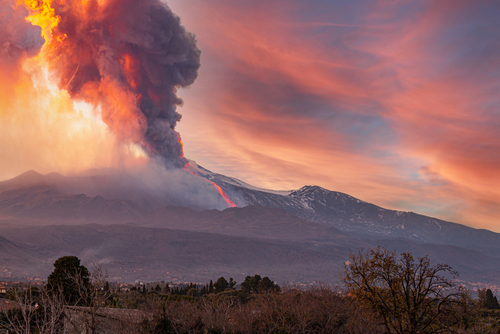
The Long Valley Caldera, California’s supervolcano, has been showing signs of increased seismic activity.
Over the past few years, more than 2,000 earthquakes were detected in the region, raising concerns among scientists and residents alike. This surge in seismic events prompted an extensive investigation to determine whether these tremors could be precursors to a catastrophic eruption.
A team led by seismologist Zhan placed dozens of seismometers throughout the Eastern Sierra region to capture seismic measurements using a process known as distributed acoustic sensing (DAS).
3D Topobathymetric animation #ilopango #caldera #volcano last eruption 1879-1880 #Cerros #Quemados lava dome extrusion. @NASAEarth @IvanSunye @crpullinger @jrobertollerena @chambarev pic.twitter.com/CGf3tWeMy0
— S E A T I Z E N © (@BairesJose) October 22, 2023
The team covered 62 miles of the caldera with cables to capture underground snapshots. Over a year and a half, they measured more than 2,000 seismic events, most of which were too small to be felt by people.
These measurements were then processed by a machine learning algorithm, which developed an image showing the locations of each quake.
Emily Montgomery-Brown, an expert on the Long Valley Caldera who was not involved in the study, revealed these swarms of earthquakes started in 2011. These quakes were then followed by a ground deformation, in which the land rose and tremors dissipated in 2020, leaving the region quiet.
However, Montgomery-Brown warns an eruption is still a possibility. A study conducted in 2018 found the Long Valley Caldera holds 240 cubic miles of magma underneath the surface.
“So even if the Long Valley magma reservoir is moribund, there are other pockets of magma in the area,” Montgomery-Brown said.
A 3,300-foot-tall underwater volcano has been discovered 184 miles off the Northern California coast. The crater sits about 2 miles below the ocean's surface. #Ocean #Volcano #California https://t.co/F2FlmdQXtw
— Healthy World For All (@HealthyWFA) May 24, 2023
If the caldera were to erupt, it would eclipse the 1980 explosion of Mount St Helens, which belched out just 0.29 cubic miles of volcanic material into the atmosphere. In fact, the valley’s storage of 240 cubic miles of magma is enough to fill 400 million Olympic swimming pools.
This potential threat underscores the importance of preparedness and vigilance. It is crucial for local authorities, residents, and businesses in the region to have emergency plans in place and to stay informed about the latest scientific findings.
While the possibility of an eruption remains uncertain, the increased seismic activity serves as a stark reminder of the powerful forces at work beneath our feet.















